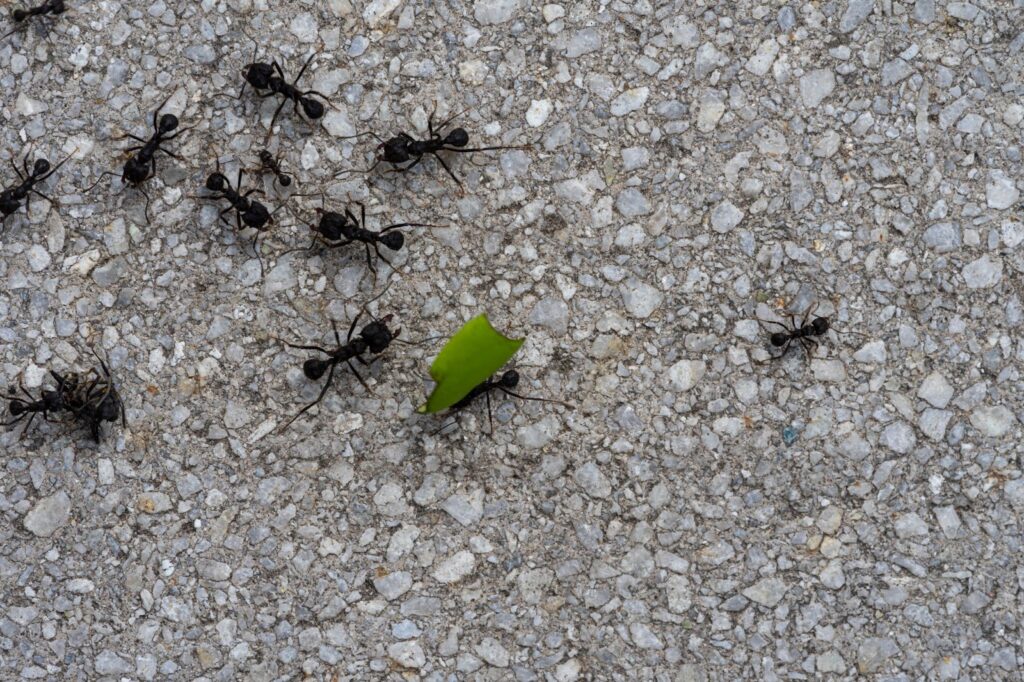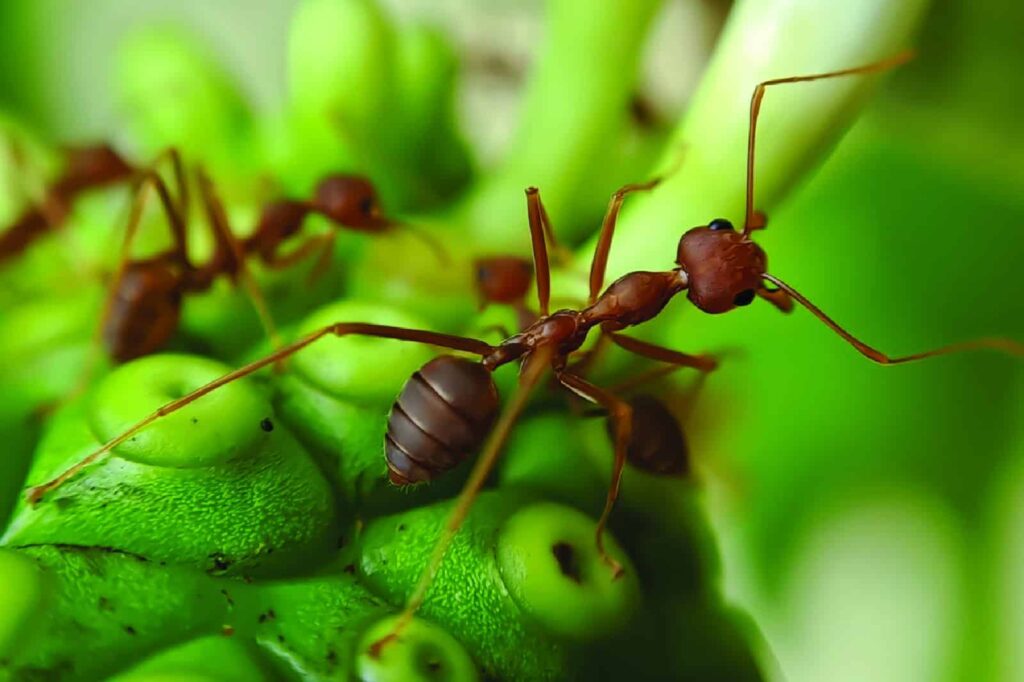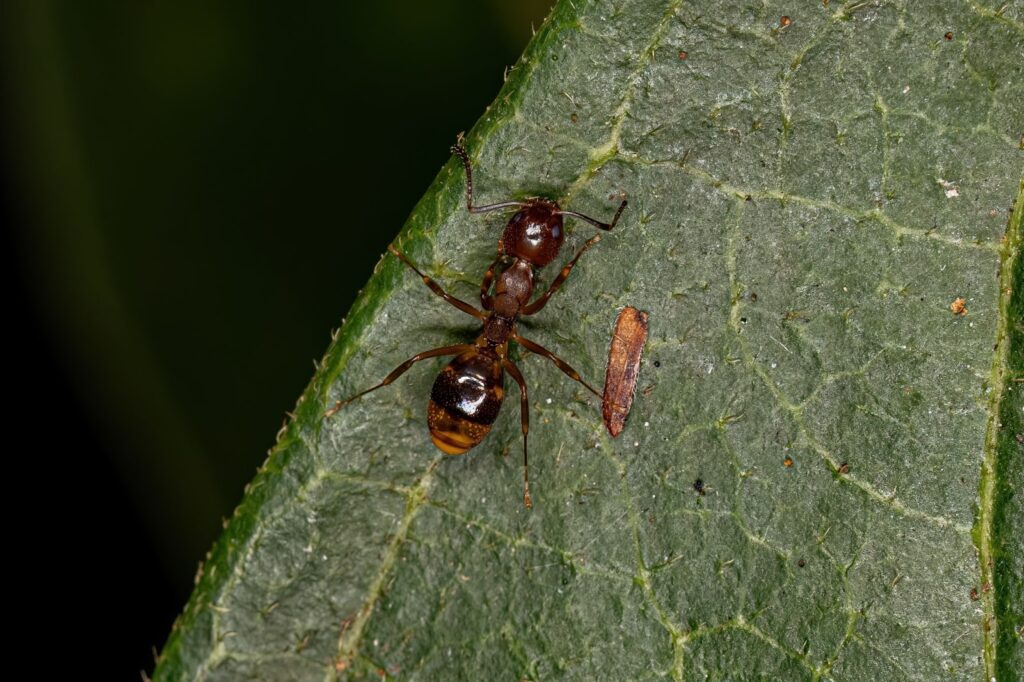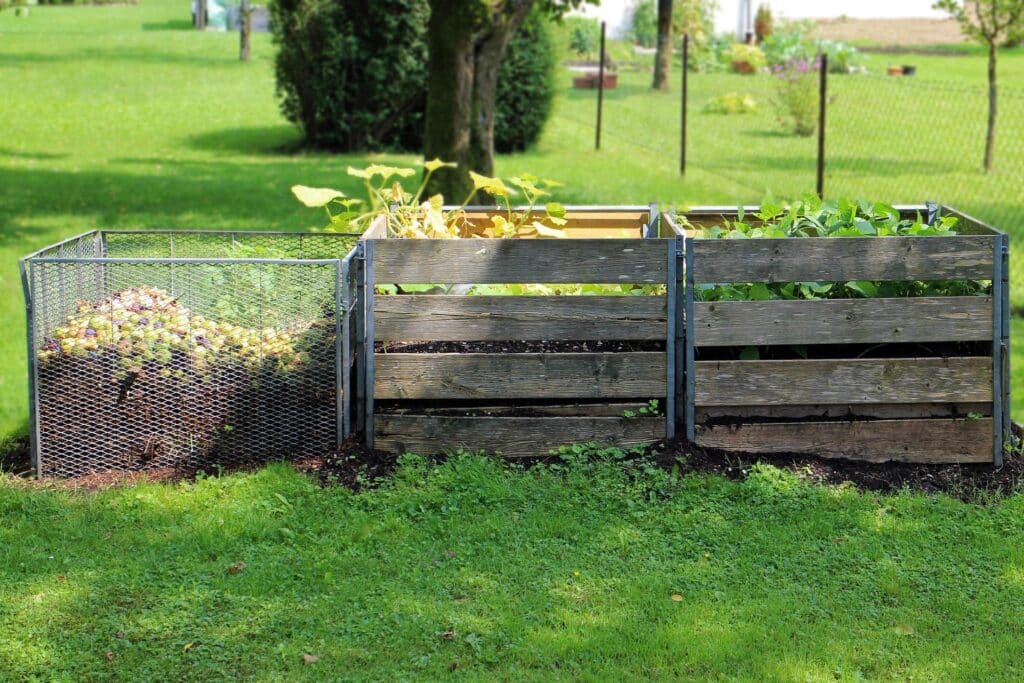When learning where pests live and how to best control them, it’s key to remember that all pests, including ants, have three basic necessities:
- Something to eat
- Something to drink
- Somewhere to live
Having a general understanding of these three, basic requirements will give you most of the knowledge you need to control ant activity around your home. And knowing these things especially helps answer the one question, “Why are ants in my home?” If you can determine that, then all you have to do is treat the location or area where they are living, and then limit or reduce the things they’re after: something to eat, and something to drink.
Something to Eat
Inside Your Home
Household pest ants generally feed on sugar, protein, oils/fats, and carbs.
Sugars and Sweets: Ants have a sweet tooth and are attracted to sugary substances. They are commonly found foraging around spilled sugar, honey, fruit juices, and other sweet foods in your kitchen. Make sure to promptly clean up spills to deter ants from coming indoors.
Proteins: While ants primarily seek out sugars, they also require protein for their colony’s growth and development. This can include meat, eggs, and even pet food left out in the open. Store these items securely and clean up any crumbs or spills.
Fats and Oils: Ants are also known to be attracted to fats and oils found in greasy or oily foods. They may target items such as butter, cooking oil, and even the residue left on unwashed dishes. Ensuring your kitchen is clean can help prevent ant infestations.
Carbs: Ants also love carbs too, so watch out for discarded bread and crumbs. Your trash is a cornucopia of all the sugars, proteins, and carbohydrates they need, so be sure to take out the trash regularly.
Outside Your Home
When ants are around your home, they’ll likely seek similar food types that they would seek inside your home. Here are some examples.
Nectar and Honeydew: Ants are natural foragers, and they are particularly drawn to nectar-producing plants and the honeydew excreted by aphids and other insects. They maintain and protect colonies of aphids and scale insects. This relationship between ants and aphids is a mutualistic one, as ants protect aphids in exchange for this sugary substance.
Plant Sap: Some ants have the ability to feed on plant sap directly. They use their mouthparts to pierce plant tissues, extracting the sugary liquid.
Other Insects: Many ant species are predatory and will hunt smaller insects. They can be particularly useful in controlling pest populations in your garden. However, if ants are causing problems indoors, it’s best to address the underlying issue rather than relying on them for pest control.
Understanding what ants eat is essential for effective pest management. By keeping your home clean and minimizing food sources, you can significantly reduce the likelihood of ant infestations. Maintaining a balanced ecosystem in your garden and yard can also help keep ant populations in check naturally. Remember, if you’re dealing with a persistent ant problem, seeking professional pest control from Aptive may be necessary.
At Aptive, our treatment process doesn’t end indoors. The exterior of your property is properly examined and treated to protect against future invasions. Areas such as door and window frames, light fixtures, downspouts, corners, and even eaves are treated.
Furthermore, we take measures to handle potential ant activity in bushes and shrubs in your yard. We treat your home and yard providing you peace of mind from ants both inside and out. And unlike other services that merely treat the foundation and spot treat around the house, our approach covers the entire home, where accessable to reach, and yard in most states.
Something to Drink
While we often focus on what they eat, understanding what ants drink is equally important in managing and limiting infestations. In this section, we’ll explore what ants consume in terms of liquids both inside and outside your home.
Inside Your Home
Sugary Liquids: Just like with their food preferences, ants have a strong attraction to sugary liquids. This includes spills of soda, juice, and syrup. It’s crucial to promptly clean up any spills to prevent ants from finding a new water source.
Water Residues: Why is it that ants are usually found in kitchens and bathrooms? Food and water! Ants are resourceful and can often find moisture in unexpected places. This might include condensation around pipes, leaking faucets, or even the residual moisture in damp areas of your home. Your bathroom is the perfect place for a permanent water source for ants. Fixing leaks and reducing excess moisture can help deter ants.
Pet Water Bowls: Ants are known to gather around pet water bowls, especially if they’re left out for extended periods. Make it a habit to change your pet’s water regularly and clean up any spills promptly.
Outside Your Home
Properties with higher water use do tend to have greater pest problems, both flying (wasps, bees, mosquitoes) and non-flying (ants & spiders). Reducing your water usage to minimum levels will help reduce the general pest problem.
Dew and Rainwater: In outdoor environments, ants rely on natural sources of water. They’re particularly drawn to dew that forms on leaves and grass in the early morning. Rainwater puddles can also serve as a vital water source for ant colonies.
Nectar and Honeydew: Outside, ants have access to nectar-producing plants and the honeydew secreted by aphids and other insects. These sugary substances can provide ants with essential hydration.
Puddles and Moist Soil: After rain or watering, puddles and moist soil become valuable water sources for ants. They’ll often congregate around these areas to drink and replenish their colony’s water supply.
While ants might not consume liquids in the same way we do, they do require water for survival. Being mindful of potential water sources both inside and outside your home can help prevent ant infestations. Fixing leaks, promptly cleaning up spills, and managing outdoor watering can all contribute to a less hospitable living space for these tiny but determined insects.
Somewhere to Live
Ants have a knack for adaptation, thriving in various environments around the world. Understanding their preferred habitats can be invaluable in managing infestations.
Aptive has compiled a heat map showing ant activity by month throughout the United States.
Inside Your Home
The majority of the ants you see inside are not nesting inside your home; these ants are typically looking for something to eat and something to drink. But that doesn’t mean that it can’t happen. Here are some areas where ants might be found inside.
Moist Areas: Ants are highly attracted to areas with moisture. Bathrooms, kitchens, and laundry rooms are common targets. Leaking pipes, damp wood, or even condensation around windows can create ideal conditions for ants to establish colonies.
Cracks and Crevices: Ants are masterful at finding the tiniest of openings. They’ll often make their homes in cracks in walls, floors, or foundations. Sealing these entry points can help keep ants from establishing colonies inside your home.
Nesting in Insulation: Ants are known to nest within insulation materials. If the insulation becomes damp, it can create a perfect environment for ants to thrive. Regular inspections and maintenance of your home’s insulation can prevent this.
Outside Your Home
Where is the most damp, humid, and/or moist part of your property? Anywhere that has piles or layers of organic material. Mulch beds? Put your hand under that top layer of mulch and how does that feel? Damp. Window wells? These are common locations where ants nest outside your home.
Under Stones and Pavers: Ants love spaces that provide both shelter and proximity to the soil. Pavers, stones, and landscaping features that are in contact with the ground are prime real estate for ant colonies.
In Garden Beds: Well-drained garden beds offer ants a suitable environment for nest-building. The loose, aerated soil provides easy excavation opportunities, and the presence of plant roots can offer additional stability and protection.
Near Trees and Shrubs: Ants are resourceful and often build nests near trees or shrubs. The roots of these plants provide stability, while the canopy offers shelter from rain and predators.
Somewhere to Enter
Ants have to get in somehow. They can only get in through openings, though they can be openings as small as this period. Small openings generally occur around the seals of doors, windows, and pipes/wires entering the home. This can include weather seals under all doors including the garage door.
Through Cracks and Crevices: Ants are skilled at exploiting even the smallest openings. Tiny cracks in foundations, walls, and windows are prime entry points. They can use their powerful mandibles and flexible bodies to navigate through these openings. Seal cracks and gaps using caulk or weather-stripping. Regularly inspect and repair any potential entry points.
Through Vents and Utility Lines: Ants are remarkably versatile when it comes to navigating through structures. They can use vents, pipes, and utility lines as highways into your home. They may even use tree branches or shrubs as a bridge. Install screens or grates over vents and utility openings. Seal any gaps around pipes and wires where they enter your home.
Nesting in Potted Plants: Outdoor potted plants can house ant colonies, and if placed near windows or doors, ants may venture inside seeking food or shelter. Inspect potted plants regularly for signs of ant activity. Consider placing a barrier of diatomaceous earth around the pots.
Ants are persistent and resourceful insects, but with a little diligence, you can thwart their attempts to infiltrate your home. By sealing potential entry points, maintaining a clean living space, and staying vigilant, you can keep these industrious creatures where they belong.
Hire Experts to Help Your Home Stay Protected from Ants
Now you are an ant master and can manage ants in and around your home.
After learning about ants, you might begin to understand why ants require a professional pest treatment. At Aptive we take an extensive approach to the identification, treatment, and control of ant infestations. Starting from the inside, our Service Professionals conduct in-depth inspections to locate ant trails and entry points. We then assess what might be attracting these pests, whether it’s a food source or a hidden entryway. We utilize EPA-approved products, designed for interior and exterior use, to treat areas frequented by ants, particularly baseboards – a favored path of travel for these pests.
Turn to Aptive for your ant control needs, and you’ll understand why over half a million customers trust us each year to protect their homes.












